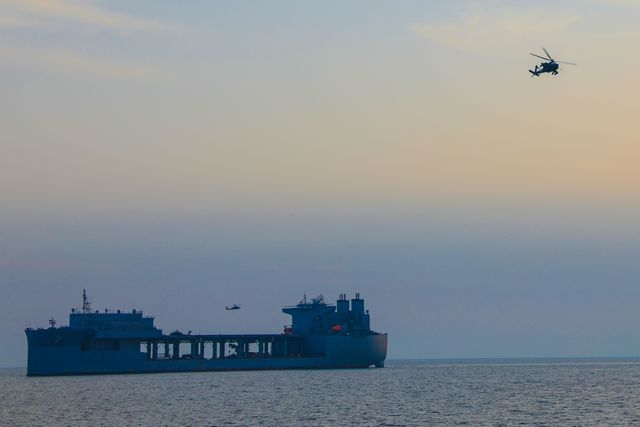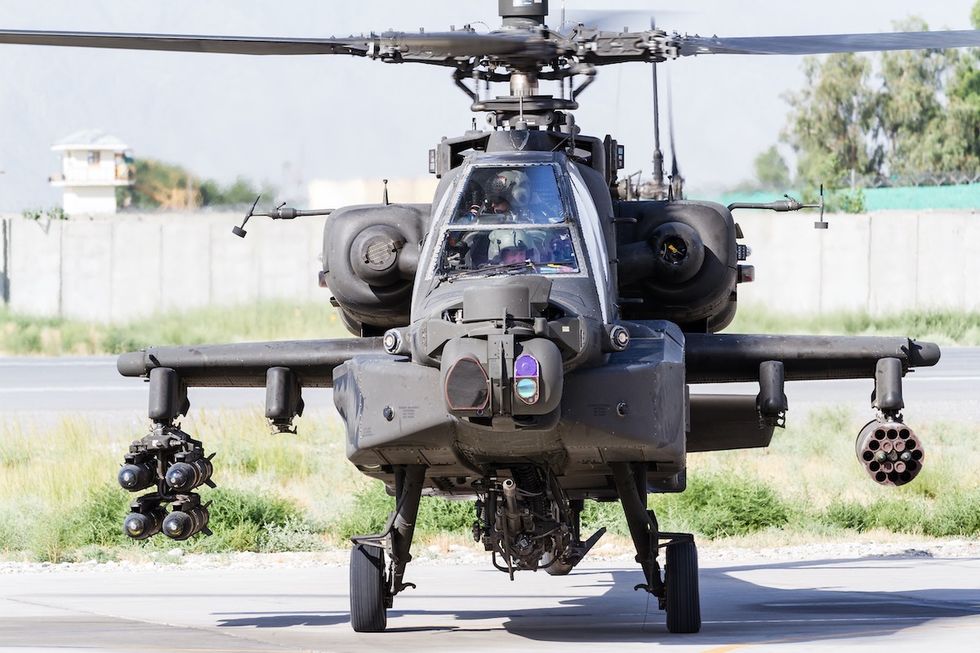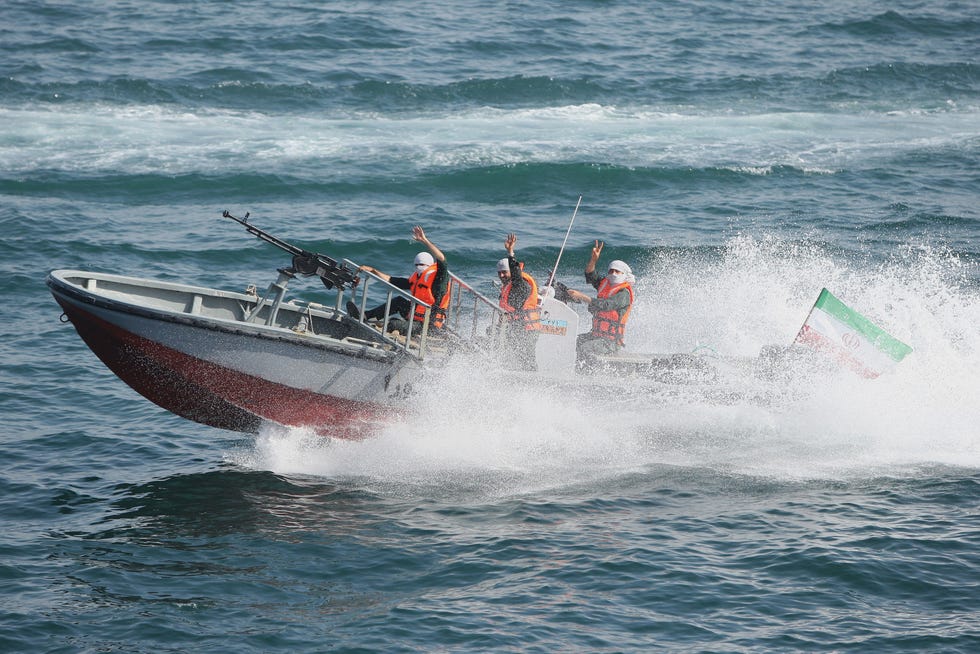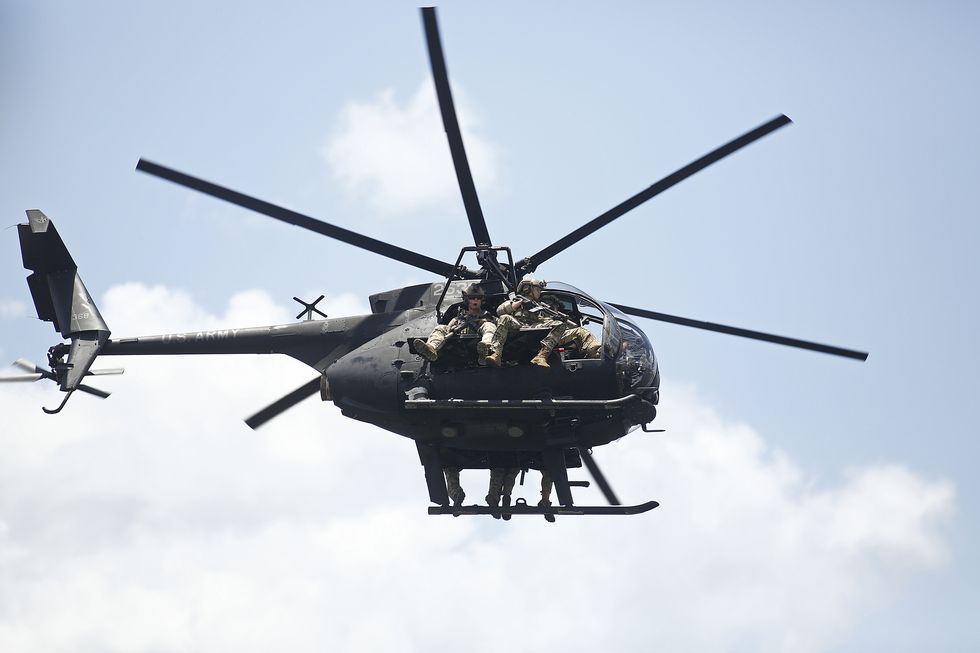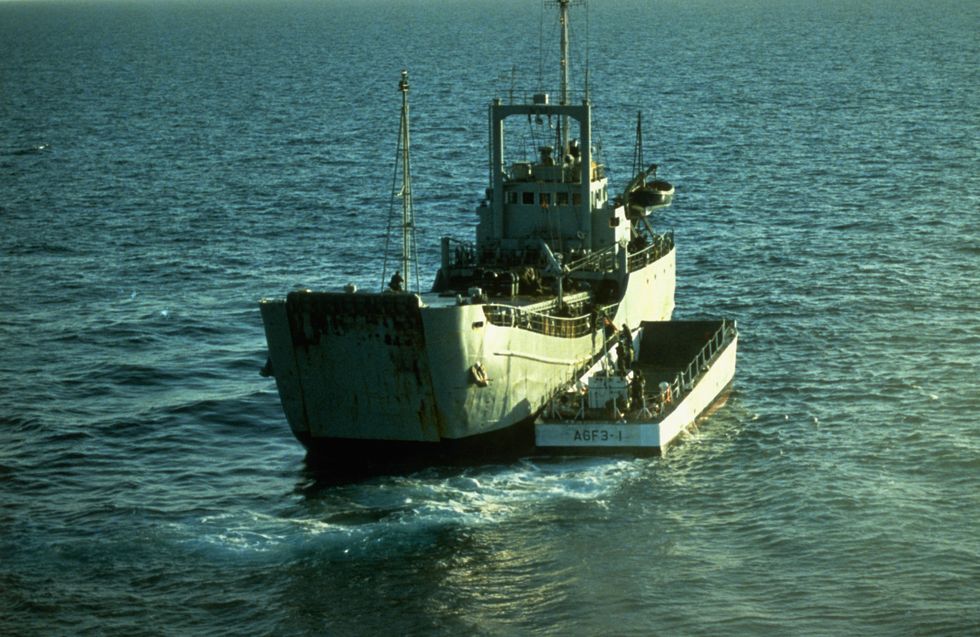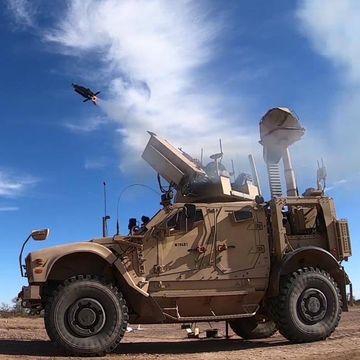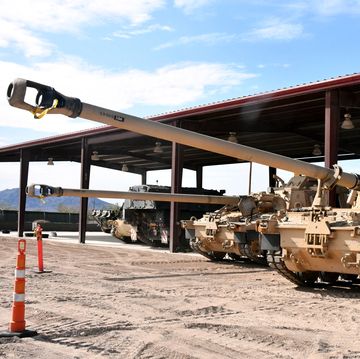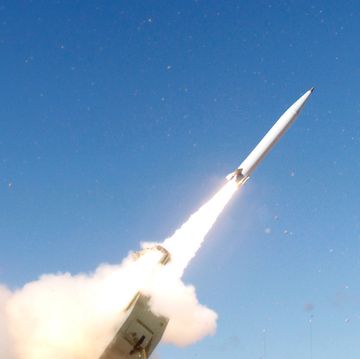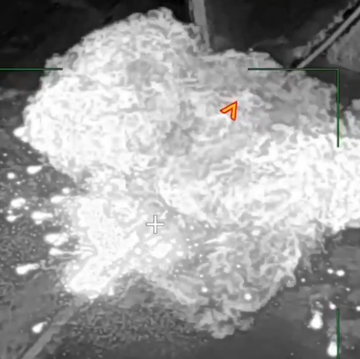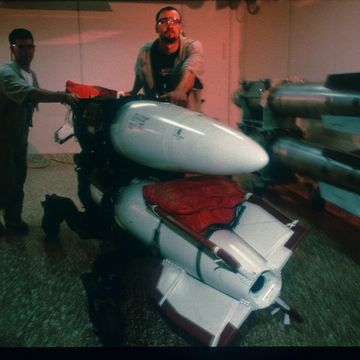- The sea base USS Puller is acting as a base for Army Apache attack helicopters.
- The helicopters could use the ship as an outpost to counter swarms of Iranian boats.
- The same concept was used in the 1980s in a little known operation known as Prime Chance.
The U.S. Army and Navy are working together to send a not too subtle message to Iran. Army Apache Guardian helicopters are practicing flying off the USS Lewis Puller, an expeditionary landing base ship stationed in the Persian Gulf.
The Lewis Puller can refuel and rearm attack helicopters, setting the services up for the same kind of joint military operation last performed in the mid 1980s under Operation Prime Chance. The Apaches, part of the Army’s Task Force Saber, spent the month of March operating from the unique warship.
The combination of the Apaches and Lewis Puller creates an improvised attack helicopter carrier, capable of launching attacks against targets on shore or at sea. The Lewis Puller is based on the Alaska-class double hulled oil tankers, which have a 1.3 million barrel capacity in their unmodified configuration. The expeditionary sea base (ESB) ships add a flight deck—the third largest after aircraft carriers and amphibious assault ships—that can handle four helicopters at once.
The ships are meant to operate as lily pads, allowing helicopters to launch from more distant, more expensive aircraft carriers and amphibious ships to reach their destination, using the ESB as a refueling point. It also features an aircraft hangar, weapons magazine, and can embark and launch small boats and unmanned undersea vehicles.
The AH-64E Apache Guardian is a dedicated attack helicopter armed with a M320 30-millimeter chain gun and up to 16 Hellfire anti-tank missiles. Alternatively, the Apache can be armed with a mixture of 8 Hellfire missiles and two rocket pods, each loaded with 19 Advanced Precision Kill Weapon Systems (APKWS) laser-guided rockets. The Hellfire missile can destroy tanks at ranges of up to 4.3 miles, while APKWS can damage or destroy lightly armored targets at up to 3.1 miles.
The Puller-Apache platform is capable of engaging small boat swarms, oil rigs, land-based anti-ship missiles, and other threats. This places the ship squarely in the path of Iran’s Revolutionary Guards Corps (IRGC), a paramilitary organization controlled by Tehran. The IRGC Navy operates swarms of armed speedboats, armed with machine guns, rocket launchers, and shoulder-fired anti-ship missiles, and trains to operate them in groups of a hundred or more to “swarm” bigger warships. The IRGC also operates anti-ship missiles and short-range ballistic missiles stationed on Iran’s coastline.
If Iran wanted to close the Persian Gulf to commercial traffic, the U.S. military would likely open it again, neutralizing threatening Iranian forces with a combination of air and sea strikes. If Iran or Iranian-backed militias struck again, as they did in January with the ballistic missile strike on U.S. forces at Ain Al-Asad Airbase, the Apaches could conduct retaliatory strikes against IRGC naval and coastal forces in the area.
Something like this has actually happened before. Between 1987 and 1989 the U.S. Army’s 160th Special Operations Aviation Regiment, also known as “The Night Stalkers,” flew Little Bird helicopters from barges and Navy frigates in the Persian Gulf. Operation Prime Chance paired the U.S. Army helicopters with Navy SEALs, Marines, and Special Boat Units in an undeclared war against Iranian Revolutionary Guards units harassing civilian shipping. Six Little Birds, both MH-6 utility and AH-6 attack versions equipped with SEAL snipers, rockets, and machine guns, flew patrols as low as thirty feet.
The Army/Navy team worked together to monitor Iranian forces in the Gulf, particularly at night when IRGC Navy forces were suspected of planting sea mines. On September 21, 1987, two AH-6 attack helicopters and one MH-6 Little Bird launched from the frigate USS Jarrett and attacked the Iran Ajr, an Iranian ship, after it was observed laying mines. The Little Birds fired on the ship, which was subsequently abandoned by its crew. A team of SEALs boarded the ship, secured the mines on board as well as proof the vessel had been mining international waters.
Now, more than 30 years later, there’s the possibility that the Army/Navy helicopter/ship team could be activated again, and against exactly the same enemy. But Prime Chance 2.0 would be even more lopsided. Iranian forces have changed little, the Apache Guardian is much more advanced than its Little Bird predecessors—both in firepower and the range of its sensors.

Kyle Mizokami is a writer on defense and security issues and has been at Popular Mechanics since 2015. If it involves explosions or projectiles, he's generally in favor of it. Kyle’s articles have appeared at The Daily Beast, U.S. Naval Institute News, The Diplomat, Foreign Policy, Combat Aircraft Monthly, VICE News, and others. He lives in San Francisco.
